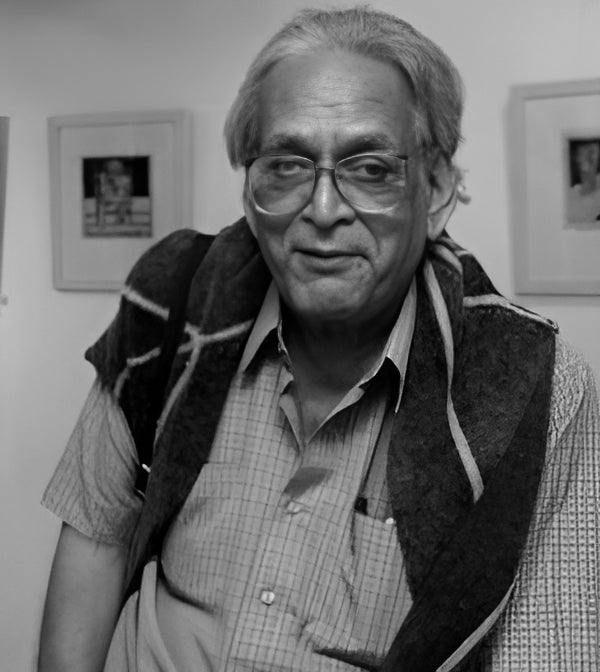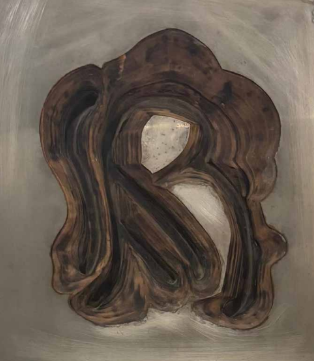
JERAM PATEL
Jeram Patel’s practice is defined by an uncompromising pursuit of form, texture, and materiality that redefined the language of Indian abstraction. Born in 1930 in Sojitra, Gujarat, Patel studied drawing and painting at the Sir J.J. School of Art, Mumbai, before further immersing himself in design and typography at the Central School of Arts and Crafts, London (1957–59). This dual training, rooted in both fine and applied arts, gave him a distinctive edge, enabling a cross-disciplinary approach that pushed against conventional boundaries. In the decades following his return to India, Patel emerged as one of the boldest and most radical voices in modern Indian art. Rejecting traditional tools and academic techniques, he developed a unique process that included the use of blowtorches and charred wood, creating scorched, tactile surfaces that carried both physical intensity and philosophical depth. His compositions, often dark, stark, and dense, confronted viewers with a sense of raw immediacy and existential unease. These works resisted easy interpretation, instead privileging the visceral and elemental qualities of material over representation.
Patel was a founding member of Group 1890, a short-lived but pivotal collective of artists committed to challenging the dominant art narratives of the time. Alongside contemporaries such as Jagdish Swaminathan, the group advocated for an indigenous modernism, free from colonial academicism and aligned with personal vision and experimentation. Patel’s contribution to this movement was not only formal but ideological: his refusal to conform underscored a broader resistance to aesthetic orthodoxy. Over the course of his career, Patel’s works were exhibited widely across India and internationally. He represented India at significant platforms including the Tokyo Biennale and the São Paulo Biennale in 1963, and later at the Third World Biennale in Baghdad and the Festival of India in London. His works are now part of several major collections, including the National Gallery of Modern Art, New Delhi, and the Museum of Fine Arts, Bhopal.
Jeram Patel’s legacy is one of fearless experimentation and unrelenting inquiry. His ability to extract expressive power from scorched surfaces and charred voids marked a significant departure in Indian abstraction. He remains a critical figure in the narrative of post-independence Indian modernism—an artist who insisted on redefining form through destruction, rupture, and the poetics of material resistance.

